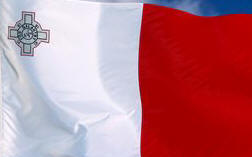The capital of Malta is inextricably linked to the history of the military and charitable Order of St John of Jerusalem. It was ruled successively by the Phoenicians, Greeks, Carthaginians, Romans, Byzantines, Arabs and the Order of the Knights of St John. Valletta’s 320 monuments, all within an area of 55 ha, make it one of the most concentrated historic areas in the world.
The Fortress City, Citt Umilissima, “a city built by gentlemen for gentlemen”. Valletta has many titles, all recalling its rich historical past. It is the “modern” city built by the Knights of St John; a masterpiece of the baroque; a European Art City; and a World Heritage City. But these are just some of its faces and fortunes.
Valletta is also Malta’s capital city: a living, working city, the administrative and commercial heart of the Islands. Nowhere in Malta is the life of the Islands reflected more than here. The city is busy by day, yet retains a timeless atmosphere. The grid of narrow streets house some of Europe’s finest art works, churches and palaces.
Valletta hosts a vast cultural programme. Street events are staged against the city’s magnificent baroque architecture and floodlit bastions. There is theatre and music and all manner of things to see and join in, from avant garde art to traditional church festas. The city is a delight to shop in: narrow side streets are full of tiny shops selling antiques, maps, books, prints and jewellery. For top quality fashion, music and much more try Valletta’s main streets – Republic Street and Merchants Street.
Walking around Valletta, you’ll come across an intriguing historical site around every corner: votive statues, niches, fountains and coats of arms high up on parapets. And when you need to stop and take it all in, the city yields up squares, courtyards, gardens and any number of cafs, right on cue.
See also:
![]() Malta Report [World Heritage Convention]
Malta Report [World Heritage Convention]

